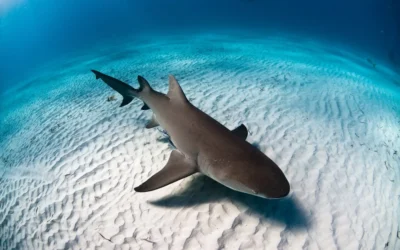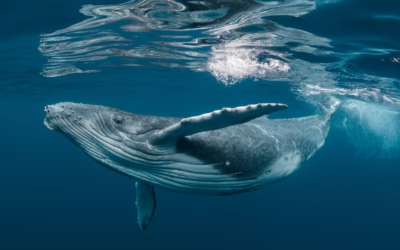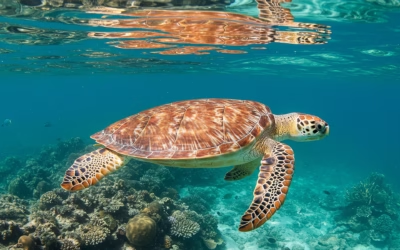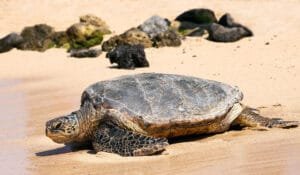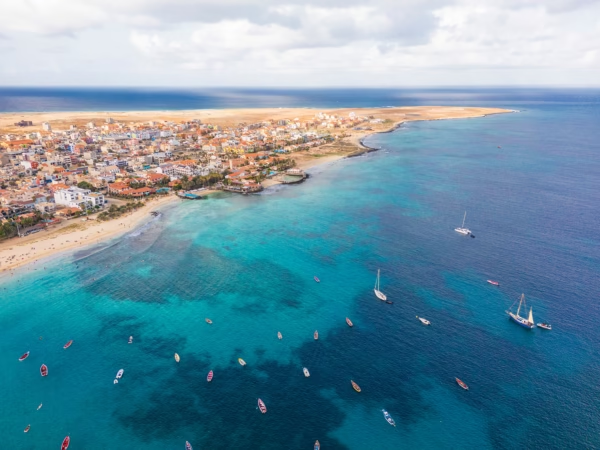Iago Sparrow: Endemic and Easy to Spot on Sal
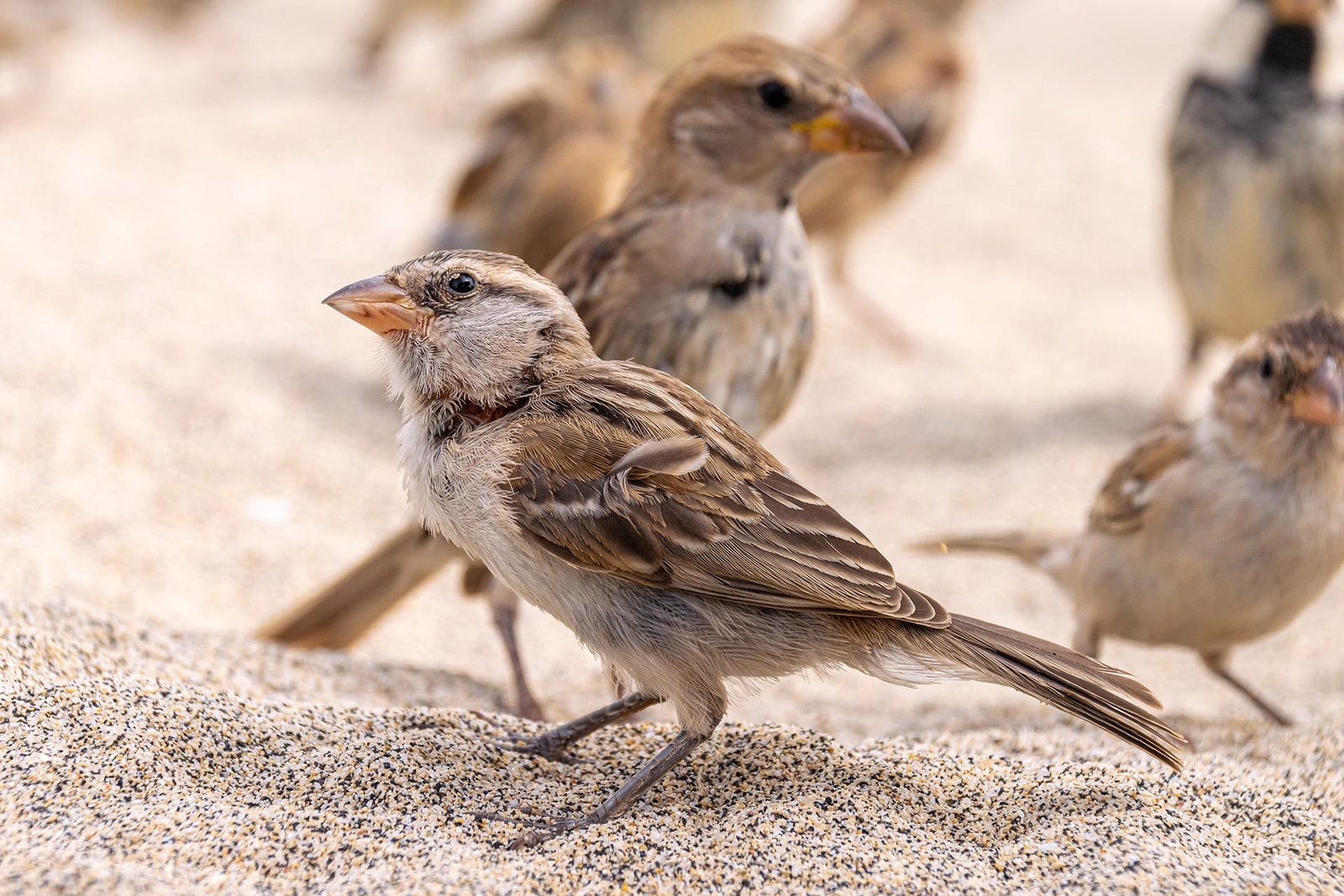
These cute little birds you observe on the streets of Santa Maria and in the crowns of trees are far cousins of European sparrows and, contrary to popular belief, didn’t migrate to the islands from far away. These little birds are Iago sparrows (Passer iagoensis) and are endemic to the Cape Verde Islands. That’s why they are often called Cabo Verde sparrows by professional and hobby ornithologists. Iago sparrows occur on all islands of the archipelago except Fogo, and on most of them, it is pretty standard.
Cabo Verdean Iago Sparrow
The Iago sparrow is a small bird. It’s 12–13 centimetres long, with a wing length of around 6 centimetres. Its plumage is similar to that of the house sparrow and is similarly sexually dimorphic. Which means that the appearance of males and females differs.
Females and young birds have brown plumage with black marks, a dull grey underside and a distinct supercilium – a characteristic stripe which runs from the base of the bird’s beak above its eye, finishing towards the rear of the bird’s head. Male birds differ from females by having a brighter underside, a black or greyish-black crown and eyestripe, a grey nape and a small patch of white on the lower forehead. The sides of their heads have a rich, cinnamon-coloured hue. The scapulars are white and brown, while the rest of the upper parts are brown, streaked with black and beige.
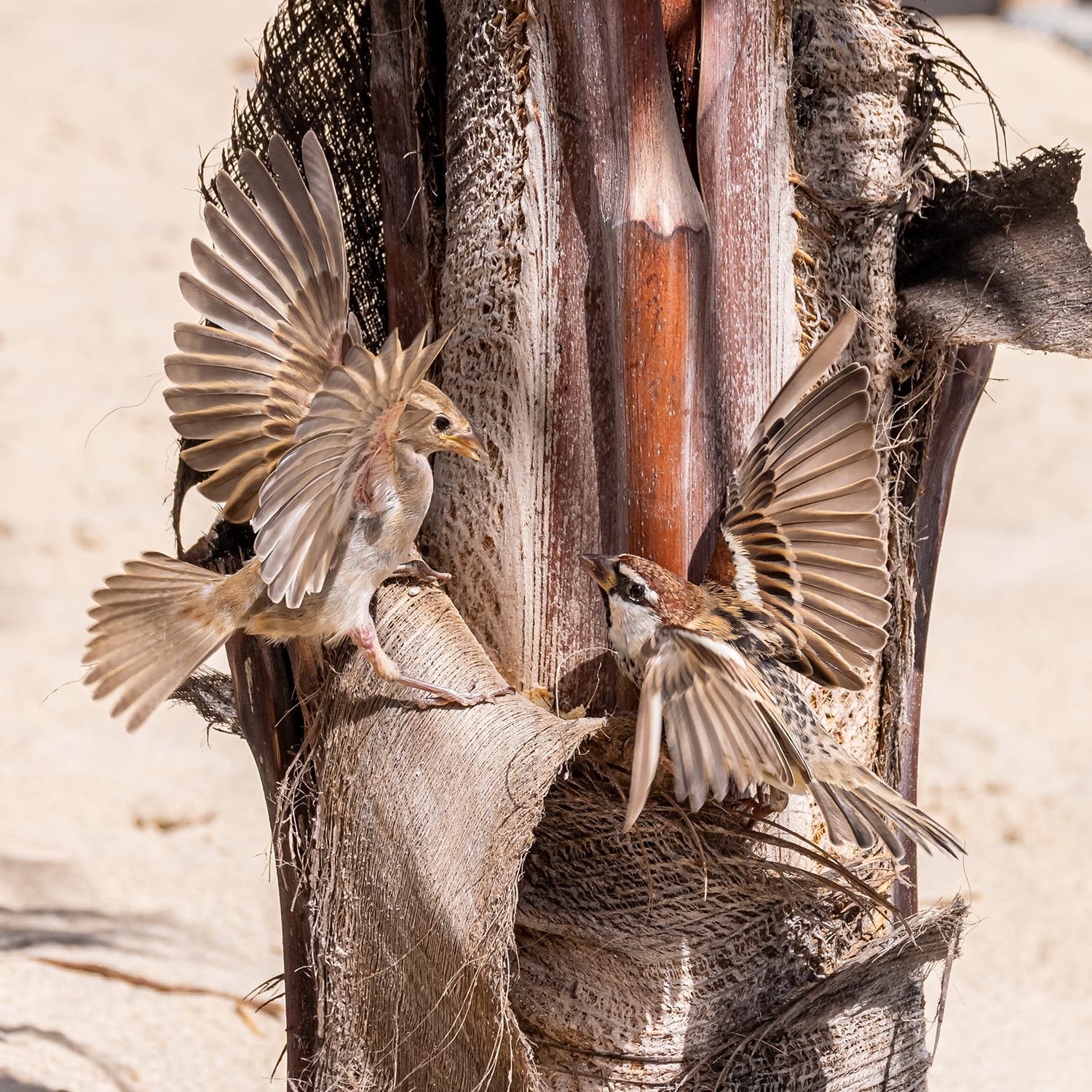
Diet and behaviour
Adult Iago Sparrow forages mainly on the ground and feeds primarily on grass seeds and grain – the main cereal crop grown in Cape Verde is maize – but also on insects and plant shoots. It can damage crops by eating young leaves, and will also consume food scraps available near restaurants and houses. Young birds are fed almost exclusively on insects, especially caterpillars, flies, and orthopterans.
Because of the scarcity of water to drink in its habitat, the Iago sparrow has a strong attraction to water sources, and large flocks may congregate when humans provide the water they can drink. They are often dust-bathing in small groups to keep their feathers clean.
Alarms, calls and songs
The Iago sparrow’s vocalisations include calls varying between the sexes, elaborations of these (called songs) and an alarm call. Calls are chirps, somewhat similar to those of other sparrows. The version made by males is described as a twangy “cheesp” or chew-weep, and that of females as a more sibilant “chisk”. The song is a long, elaborate series of call notes made by breeding males in their nests. An alarm call is similar to all other sparrows and transcribed as chur-chur-chur.
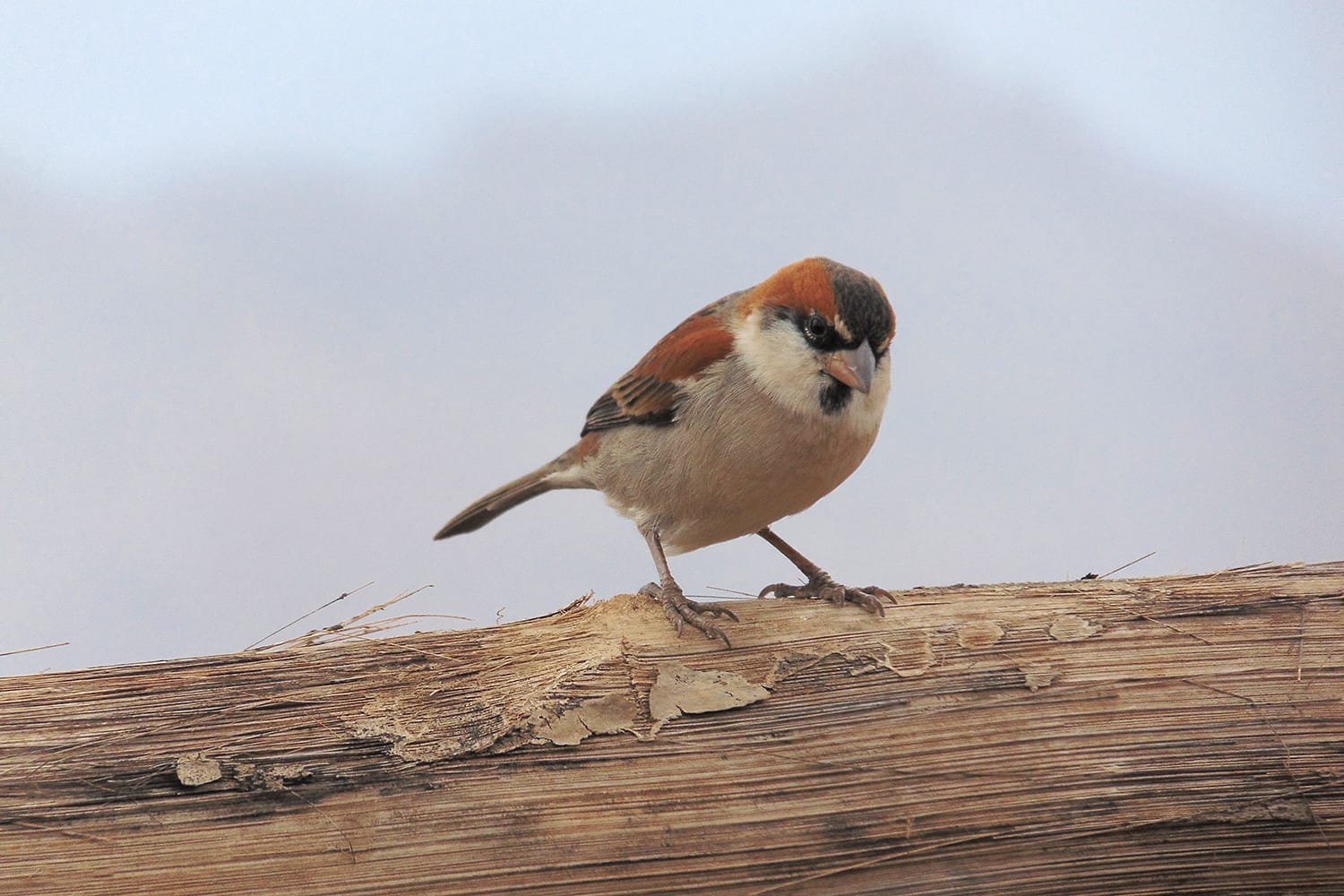
Taxonomy
Charles Darwin discovered and collected an Iago sparrow during the first stop of his second voyage on the HMS Beagle on the island of Santiago. In 1837, zoologist John Gould described the bird for him in the Proceedings of the Zoological Society of London and named it Pyrgita iagoensis.
Gould wrote The Zoology of the Voyage of HMS Beagle with Darwin and three other zoologists in 1841, placing the Iago sparrow in the genus Passer, which contains at least 20 different species, including the house sparrow.
The Iago sparrow has been considered a member of the African rufous sparrows, which includes species such as the great sparrow (Passer motitensis). However, new DNA studies suggested that the Iago sparrow may be a close relative of the Spanish and the house sparrow, not the rufous sparrows.
Some scientists argue about the existence of the Iago sparrow subspecies. According to W. R. P. Bourne, the variations he observed comprised two clinical trends: an increase in darkness towards the south and a decrease in size further from the continental coast. On the other hand, Charles Vaurie, examining differences in plumage and measurements of specimens in major museums, did not find any significant variation. Neither Vaurie nor Summers-Smith recognised any subspecies.
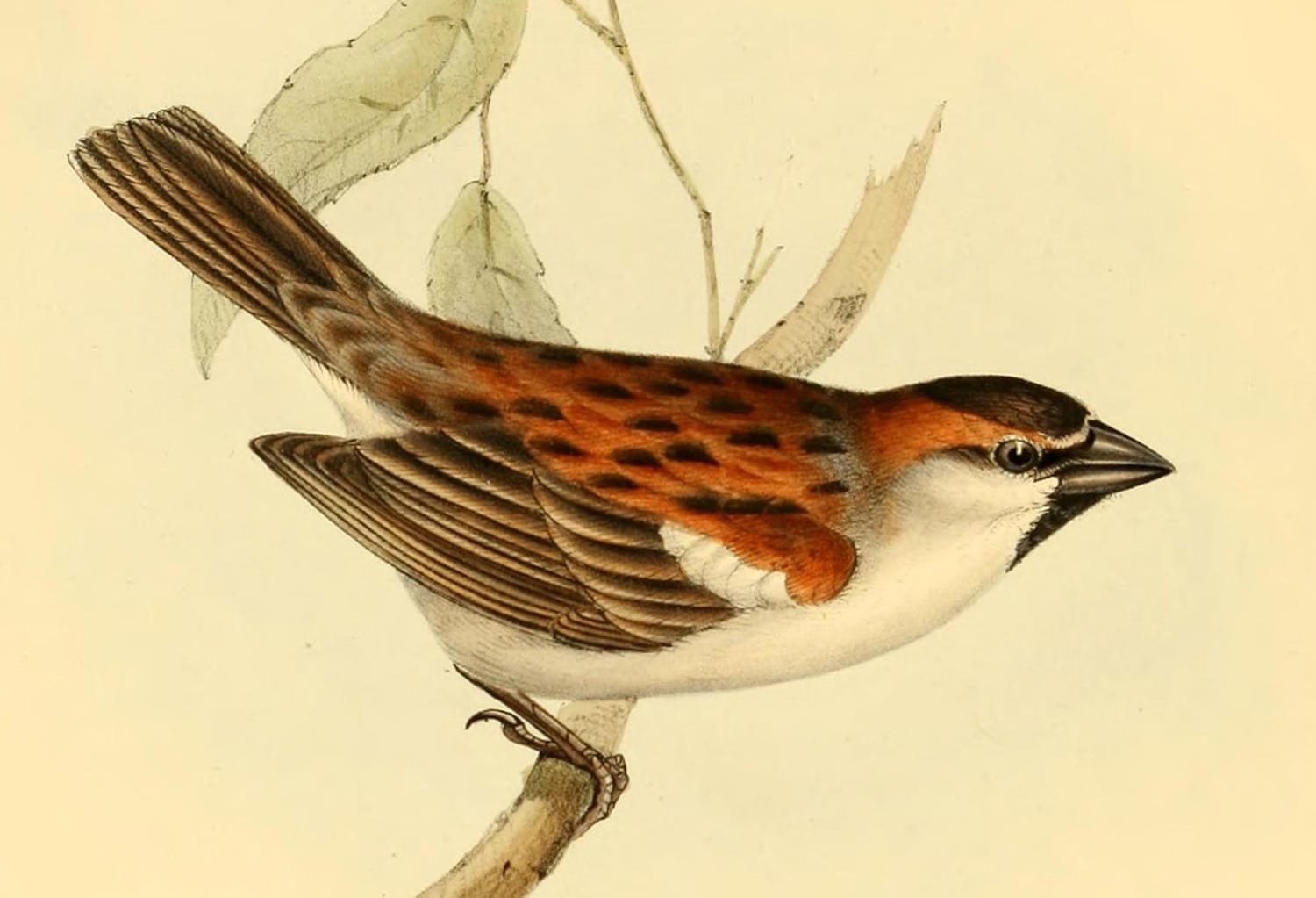
Natural habitats of Iago sparrows
The Iago sparrow is endemic to the Cape Verde archipelago. It is found on most islands, excluding Fogo, and is scarce on Santa Luzia, Branco, and Sal.
The Iago sparrow is found commonly in various habitats, including flat lava plains, coastal cliffs, gorges, and the edges of farmland, at altitudes of up to 1,200 metres. It also occurs in settled areas and gardens, where it may overlap somewhat with the house sparrow but usually not with the Spanish sparrow. The Spanish sparrow is found in more regions cultivated with large trees and villages, whereas the Iago sparrow is restricted to more arid lands with smaller trees. In settlements where the house sparrow and Iago sparrow occur together, house sparrows tend to occupy the denser areas, while Iago sparrows are found primarily around trees and open spaces.
In agricultural areas, the Iago sparrow may cause damage to crops, primarily by consuming buds and shoots. Though the size of its range means it may be at risk of unpredictable environmental changes. However, it’s assessed as Least Concern by the IUCN Red List.
Interesting fact: In May 2013, four vagrant Iago sparrows were seen at Hansweert in the Netherlands, having flown onto a ship as it passed by the island of Raso.
Bibliography / Sources
- Photo of a male Iago sparrow (Passer Iagoensis) on Monte Verde, São Vicente by Diego7864, CC BY-SA 4.0 via Wikimedia Commons;
- Illustration of a male Iago Sparrow (Passer iagoensis) by John Gould in The Zoology of the Voyage of H.M.S. Beagle (part 3) by Charles Darwin, John Gould, and others, Public domain, via Wikimedia Commons;
- Iago sparrow (Passer Iagoensis) on Wikipedia, The Free Encyclopedia.
